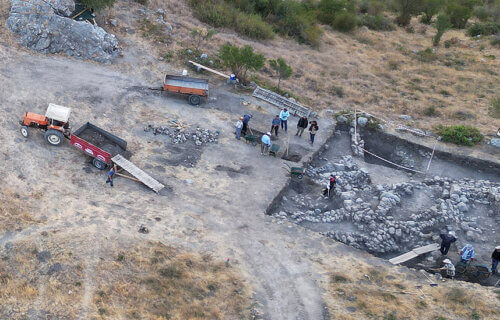BOGAZKOY-HATTUSHA, Turkey — A new language has been discovered during an excavation in Turkey’s UNESCO World Heritage Site, captivating researchers and historians. Archeologists were conducting research at the Boğazköy-Hattusha site when they uncovered tablets with an unknown Indo-European language.
Boğazköy-Hattusha, located in north-central Turkey, was once the bustling capital of the Hittite Empire, a formidable power in Western Asia during the Late Bronze Age (1650 to 1200 BC).
Over the course of more than a century, diligent excavations have been carried out at Boğazköy-Hattusha, guided by the German Archaeological Institute. This historic site earned UNESCO World Heritage status in 1986, and it has yielded a treasure trove of over 30,000 clay tablets inscribed with cuneiform writing. These tablets, deemed UNESCO World Documentary Heritage in 2001, have provided invaluable insights into the history, society, economy, and religious practices of the Hittites and their neighbors.
Under the current direction of Andreas Schachner, a professor from the Istanbul Department of the German Archaeological Institute, annual archaeological campaigns continue to unearth cuneiform treasures. Most of these texts are written in Hittite, the oldest known Indo-European language and the dominant language of the site. However, the excavations of this year have delivered an unexpected revelation. Discovered within a Hittite cultic ritual text is a recitation in an entirely unknown language.

Daniel Schwemer, a professor and chair of Ancient Near Eastern Studies at Julius-Maximilians-Universität (JMU) in Würzburg, Germany, is actively involved in studying the cuneiform findings from the excavation. He reveals that the Hittite ritual text refers to this new language as the “language of the land of Kalašma,” believed to be situated in the north-western reaches of the Hittite heartland, possibly in the modern regions of Bolu or Gerede.
The discovery of a new language within the Boğazköy-Hattusha archives is not entirely surprising.
“The Hittites were uniquely interested in recording rituals in foreign languages,” notes Schwemer in a media release.
These ritual texts, transcribed by scribes of the Hittite king, reflect a variety of Anatolian, Syrian, and Mesopotamian traditions and linguistic backgrounds. They offer a valuable glimpse into the relatively unknown linguistic landscape of Late Bronze Age Anatolia, where multiple languages, including Hittite, Luwian, Palaic, and Hattic, were spoken. Now, the language of Kalasma can be added to this linguistic tapestry.
Although the Kalasmaic text, written in this newly discovered language, remains largely indecipherable, Elisabeth Rieken, a colleague of Schwemer and professor in ancient Anatolian languages at Philipps-Universität Marburg, has confirmed that it belongs to the family of Anatolian-Indo-European languages.
Rieken notes that despite its geographical proximity to the region where Palaic was spoken, the Kalasmaic text appears to share more similarities with Luwian, another Anatolian-Indo-European language. The extent of Kalasma’s relationship with other Luwian dialects from Late Bronze Age Anatolia will be the focus of further investigation.
You might also be interested in:
- Demonstratives are universal: Every language has a way of saying ‘this’ or ‘that’
- Amazing archaeological finds dating back to 10,000 BC unearthed just 8 miles from Stonehenge
- Ancient grammatical puzzle solved after 2,500 years by PhD student

